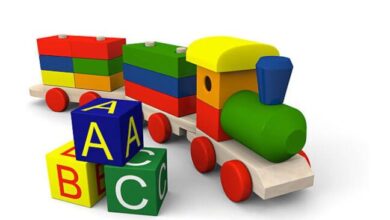Building Smarter Websites with AI-Powered Chatbots & Automation

One of the most impactful trends in recent years is the integration of AI-powered chatbots and automation into website development. These technologies are helping businesses build smarter, more responsive websites with the help of development companies like ThoughtLabs that not only serve customers more effectively but also reduce operational costs.
In this article, we’ll explore how AI-powered chatbots and automation are revolutionizing web development and how you can implement them on your website.
What Are AI-Powered Chatbots and Automation?
Understanding AI-Powered Chatbots
AI-powered chatbots are intelligent virtual assistants that can simulate human-like conversations with users. Unlike traditional rule-based bots that follow preset paths, AI chatbots use natural language processing (NLP) to understand user queries and provide more personalized, context-aware responses. These chatbots can learn from previous interactions, improving their accuracy and usefulness over time.
The Role of Automation in Website Development
Automation in website development refers to the use of software to handle repetitive tasks, freeing up developers and support teams to focus on more complex issues. AI-driven automation tools can handle everything from data collection and analysis to customer follow-up emails and website maintenance, making processes more efficient and scalable.
Benefits of AI-Powered Chatbots on Websites
24/7 Customer Support
One of the most significant advantages of AI-powered chatbots is their ability to provide round-the-clock customer support. Unlike human agents, chatbots never need a break. They can engage with customers, answer common questions, and resolve basic issues any time of the day or night. This leads to improved customer satisfaction, as users no longer have to wait for office hours to get answers.
Personalized User Experiences
AI chatbots use data analytics to personalize interactions with website visitors. By analyzing user behavior and preferences, chatbots can recommend products, offer tailored solutions, and even assist users with navigating the website. This personalized experience increases user engagement and leads to higher conversion rates, as customers feel their needs are being met efficiently.
Reduced Operational Costs
Automating customer support and lead generation with chatbots significantly reduces operational costs. Companies no longer need large teams of customer service representatives to handle common inquiries. Instead, AI-powered chatbots can manage routine questions, freeing up human agents to handle more complex issues. This not only cuts down on staffing costs but also improves service efficiency.
Faster Response Time
AI-powered chatbots provide immediate responses to user queries, reducing wait times and keeping potential customers engaged. This instant communication is crucial in today’s fast-paced world, where users expect quick answers. Faster response times lead to higher satisfaction and more conversions, as users are less likely to abandon the website.
Scalability
As businesses grow, so does the need for customer support. AI-powered chatbots are highly scalable, meaning they can handle increased traffic without additional resources. Whether your site gets 10 visitors or 10,000, chatbots can manage the workload seamlessly, ensuring every user gets the support they need.
How Automation Enhances Website Functionality
Streamlining Workflows
Website automation can significantly streamline internal workflows by taking over repetitive tasks such as data entry, form submissions, and customer follow-up emails. Custom development services for automation tools can handle these tasks in real time, reducing manual errors and speeding up the process. This allows your team to focus on more strategic activities that contribute to business growth.
Enhancing Data Collection and Analysis
AI-driven automation tools can collect, analyze, and interpret large amounts of data from website visitors in real time. This data can be used to deliver personalized content and marketing campaigns, providing users with a more engaging experience. Automation also enables businesses to make data-driven decisions, optimizing website performance based on actual user behavior.
Lead Generation and Follow-Up Automation
Automation can be a powerful tool for generating and nurturing leads. AI tools can capture leads, send personalized follow-up emails, and engage users based on their browsing history or interactions with the site. By automating this process, businesses can ensure that no potential customer falls through the cracks, all while maintaining a personal touch.
Automated Testing and Maintenance
Keeping a website functional and secure is crucial for any business. AI-driven automation can handle routine testing and maintenance tasks, such as performance monitoring, security scans, and bug detection. This ensures that the website remains optimized and secure without requiring constant manual oversight from the development team.
Best Practices for Implementing AI-Powered Chatbots on Your Website
Identify Key Use Cases
Before implementing an AI chatbot, it’s essential to identify key use cases where the chatbot can have the most impact. This could be in customer support, sales, product recommendations, or even helping users navigate your website. Focus on areas that align with your business goals and customer needs to maximize the chatbot’s effectiveness.
Keep the User in Mind
When designing chatbot interactions, it’s crucial to keep the user experience at the forefront. Make the conversations intuitive, natural, and easy to follow. Additionally, ensure that the chatbot can seamlessly escalate more complex issues to a human agent when necessary. This balance between automation and human support enhances the overall customer experience.
Regularly Update and Train Chatbots
AI chatbots need regular updates and training to remain effective. Use real user interactions and feedback to train the chatbot, ensuring it continues to provide accurate and helpful responses. The more data the chatbot has, the better it will perform over time, so continuous improvement is key.
Integration with Other Tools and Platforms
Ensure your chatbot integrates with other key business tools, such as CRM systems, email marketing platforms, and analytics tools. This will allow for seamless data flow and ensure that the chatbot can pull from various sources to provide the best possible service. Integration also helps with automating tasks like lead follow-ups and customer segmentation.
Tools and Platforms for AI Chatbots and Automation
Popular AI Chatbot Platforms
Several AI chatbot platforms offer robust features for businesses of all sizes. Drift, Intercom, Tidio, and ManyChat are popular options that provide AI capabilities, easy integration with existing tools, and user-friendly interfaces. These platforms enable businesses to quickly set up and deploy chatbots on their websites without extensive coding knowledge.
Automation Tools for Websites
Automation tools like Zapier, Automate.io, and Integromat are excellent for integrating website workflows with other business processes. These tools automate customer support, lead management, and even website testing, streamlining operations and improving efficiency. They allow businesses to automate repetitive tasks, leaving teams free to focus on strategic initiatives.
Case Studies: Success Stories of AI-Powered Websites
E-commerce Example
An e-commerce site that implemented AI-powered chatbots for customer service saw a significant increase in conversion rates. By providing instant responses and personalized product recommendations, the chatbot helped guide users through their shopping journey, reducing cart abandonment rates and improving overall user satisfaction.
SaaS Business Example
A SaaS company utilized website automation for onboarding and customer support, which led to higher user retention and satisfaction. Automated tutorials and follow-up emails ensured that new users understood how to use the product effectively, reducing churn and increasing engagement.
B2B Lead Generation
A B2B business implemented AI chatbots for lead qualification and follow-up, which improved their sales pipeline efficiency. The chatbot automatically categorized leads based on engagement levels, allowing the sales team to focus on high-potential clients, ultimately increasing sales.
The Future of AI and Automation in Web Development
AI-Driven Personalization at Scale
As AI continues to evolve, we can expect even more advanced personalization at scale. AI will help create highly individualized experiences for website users, delivering content and recommendations based on real-time data and behavior, further improving user engagement and satisfaction.
Voice-Activated Chatbots and Virtual Assistants
Voice technology is the next frontier in AI chatbots. Voice-activated chatbots and virtual assistants like Alexa and Google Assistant are becoming more integrated into websites, allowing users to navigate and interact with websites through voice commands, providing a more hands-free, seamless experience.
Autonomous Websites
Looking ahead, websites may become autonomous entities that manage their own updates, testing, and user interactions. AI will handle content updates, performance optimizations, and even design adjustments, creating websites that are fully self-sustaining.
Conclusion:
Incorporating AI-powered chatbots and automation into your website is essential for building smarter, more efficient, and scalable digital platforms. These technologies not only improve customer experience but also reduce operational costs and allow for greater personalization. As AI and automation continue to evolve, businesses that embrace these tools will be better positioned to thrive in an increasingly digital world.





